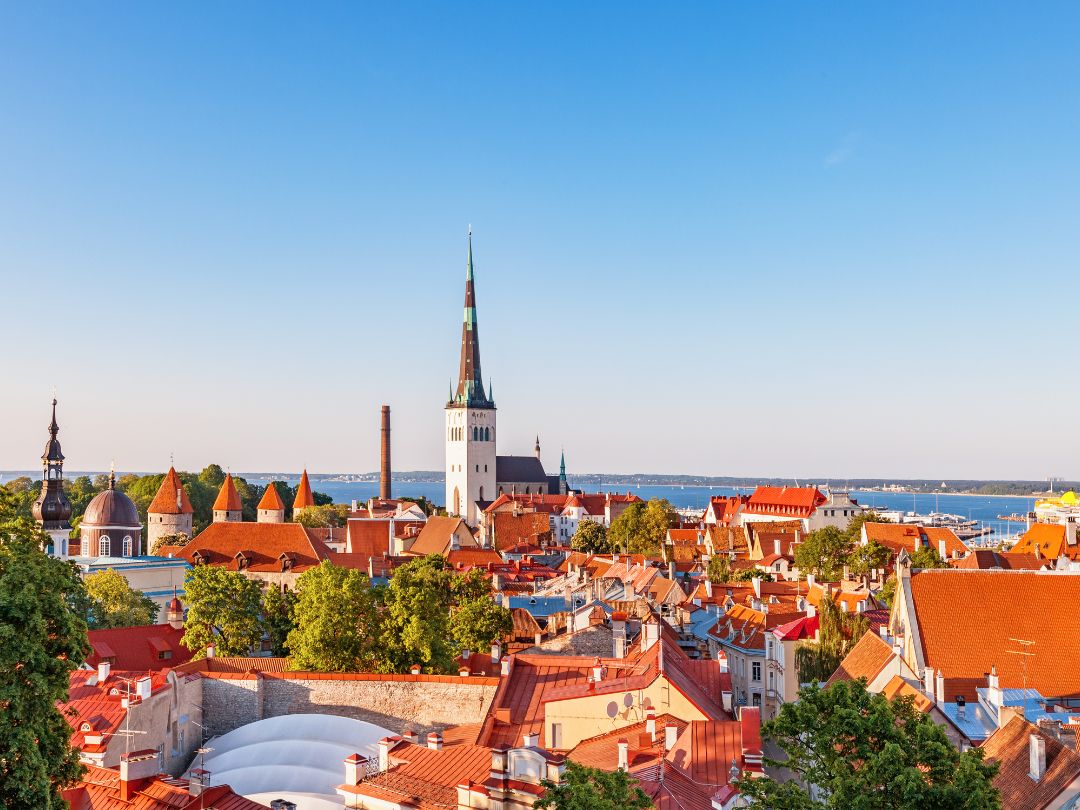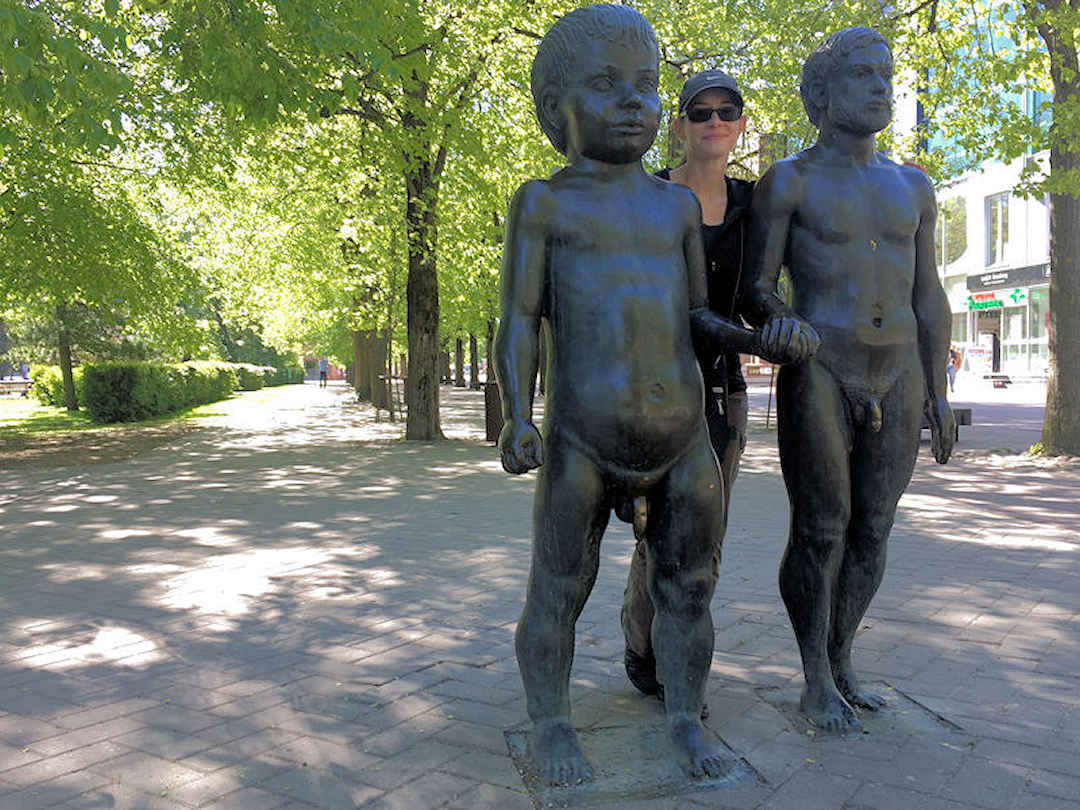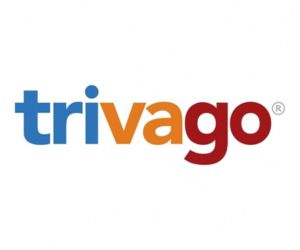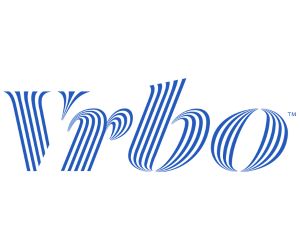Estonia is one of 51 countries that receive more tourists each year than its total population, and it is not surprising why. Tourism in Estonia is recognised as a major source of employment, and a significant contributor to Estonia’s economic growth.
While we (coming from New Zealand and Germany, respectively) are not the Estonian Tourist Board’s priority market, as independent travellers, we represent a growth market they are targeting with the National Tourism Development Plan that commenced in 2020.
So what did we get up to, and more importantly, how much did it cost to explore the Republic of Estonia?
Our daily expenses in Estonia were EUR47.30 / USD52.85 per person per day, which means, we went a bit over our budget of USD50.00. We spent a total of eight days in Estonia – two nights in Tartu, three nights in Tallinn and three nights on Saaremaa Island.
Download your Sustainable Travel Checklist and show the world you care
As travellers, we should all be aware of our travel behaviour and its environmental, economic and social impact; and make conscious decisions about it. Too often, we hear negative stories in the media about tourists behaving badly.
Here is your chance to tick some boxes and check out what it really takes to travel with a sustainable mindset.
Travel Cost Assumptions
When reading this article, please keep the following in mind:
- Our travel costs are based upon a couple travelling together.
- We are independent travellers, researching and organising our own itinerary using our go-to travel planning tools.
- Our travel style is reasonably consistent wherever we go, which is great when you want to compare travel costs between countries:
- Accommodation: We usually stay in self-catered accommodation (homestays, locally owned guesthouses, hostels and short-term rentals) - in our own room with (preferably) our own bathroom, though the kitchen may be shared.
- Dining and Groceries: We have at least two meals a day at home. We like to eat out once a day to every few days (and prefer locally owned restaurants and small eateries away from the tourist hotspots).
- Transportation: We walk a lot, and wherever possible, we travel by public transport. Only occasionally do we hire a vehicle.
- Experiences: Many of the activities we do are free of charge or cost very little. When we pay for attractions or activities, we are selective as our funds are limited (just like everyone elses).
- In addition to above expense categories, we include in our total daily costs our mail scanning and forwarding service, mobile phone plans and travel insurance - though only for the period we are in the country.
- We use a multi-currency personal account with Wise to manage our currencies XE to transfer money as required.
- Not included are the costs for entry or exit transportation into/out of the country.
Map of Accommodation, Points of Interest, Eateries and Transport
Below is a map of the recommended accommodation, points of interest, eateries and transport terminals/stops mentioned in this article.
Recommended movies to provide inspiration for your next trip
If you're looking for some travel inspiration, why not turn to the big screen? Movies have the power to transport us to different places, sparking our wanderlust and making us dream of new adventures. And with 80+ films to choose from, covering classics and hidden gems all around the world, you will be planning your next adventure in no time.
Accommodation
As we did in Lithuania and Latvia, we sourced our accommodation through short-term rentals, renting a room in our host’s home or small apartments. Staying in residential neighbourhoods close to public transport allows us to stay within our accommodation budget while not compromising on certain comforts, such as our own bathroom and a kitchen where we can prepare meals, therefore reducing dining costs.
| Name | Property Features | Location | Type | EUR Cost Per Night | Book Now |
|---|---|---|---|---|---|
| Lille Park Apartment - no longer being rented out | Tartu | Studio apartment | 32.00 | ||
| Tallinn Airbnb | Private room near city center, 2 km to Old Town | Tallinn | Room in our host’s home (which we practically had to ourselves) | 52.27 | Book Now |
| Kuressaare Airbnb | Romantic apartment in Kuressaare | Kuressaare | One bedroom cottage | 23.62 | Book Now |
How to save money on accommodation
For accommodation, as with any other travel expenses, it’s worth shopping around. When we book accommodation somewhere, we tend to look across a number of booking platforms to find the best value for money option. Wherever you book, do make sure you read the fine print to make sure you compare apples with apples. For example, your stay may incur extra charges (like local tourist taxes or cleaning fees). Some booking platforms include them, while with others, you have to pay them to your host upon arrival.
Nightly rates are generally cheaper outside of peak season. If you can only travel in peak season, look for accommodation options that are a little further away from the main tourist attractions, yet have good connections by public transport.
We use and recommend the following booking platforms.
Transport
Oh, to be a resident of Estonia! One of the benefits is that the majority of Estonian residents (in 11 of the 15 counties that make up Estonia) can ride public transport for free. For visitors and tourists, we had to pay to use the network of buses, trams, trains and trolley buses.
In Tartu, we stayed central enough to walk everywhere. The one time we used the city bus was to get from our accommodation back to the train station – we just couldn’t be bothered walking up the hill. The cost of a single ticket was EUR0.83. The Inner City Bus Transportation site was the best one for finding out about routes and fares.
We were able to take the express train from Tartu to Tallinn – again, a trip inspired by Chris Tarrant’s Extreme Railways television series (Season 4, Episode 2) for a cost of EUR10.20 per adult. We booked the ticket online, so saved EUR1.80 each on the train price.
By the time we got to Tallinn, we decided to get a little smarter with our ticket purchases. We had done some research and figured it would be cheaper to purchase a green Ühiskaart and load a 3-day ticket onto it, knowing that we had planned to go into town and return each day. An added benefit: any money stored on the card plus the deposit for the card itself will be reimbursed when you return it to a sales outlet (which we did at the airport).
We had several bus options to take from Tallinn to Kuressaare on the island of Saaremaa. The ride, while comfortable, is an adventure in itself: You take a bus, the bus goes onto a ferry, and then you jump back on the same bus to complete the journey. Because of timetable options, we chose LuxExpress going to Kuressaare and GoBus for the return journey. Both had Wi-Fi on board and were not full, so we were able to spread out. A ticket cost us EUR12 per adult (which includes the ferry ride).
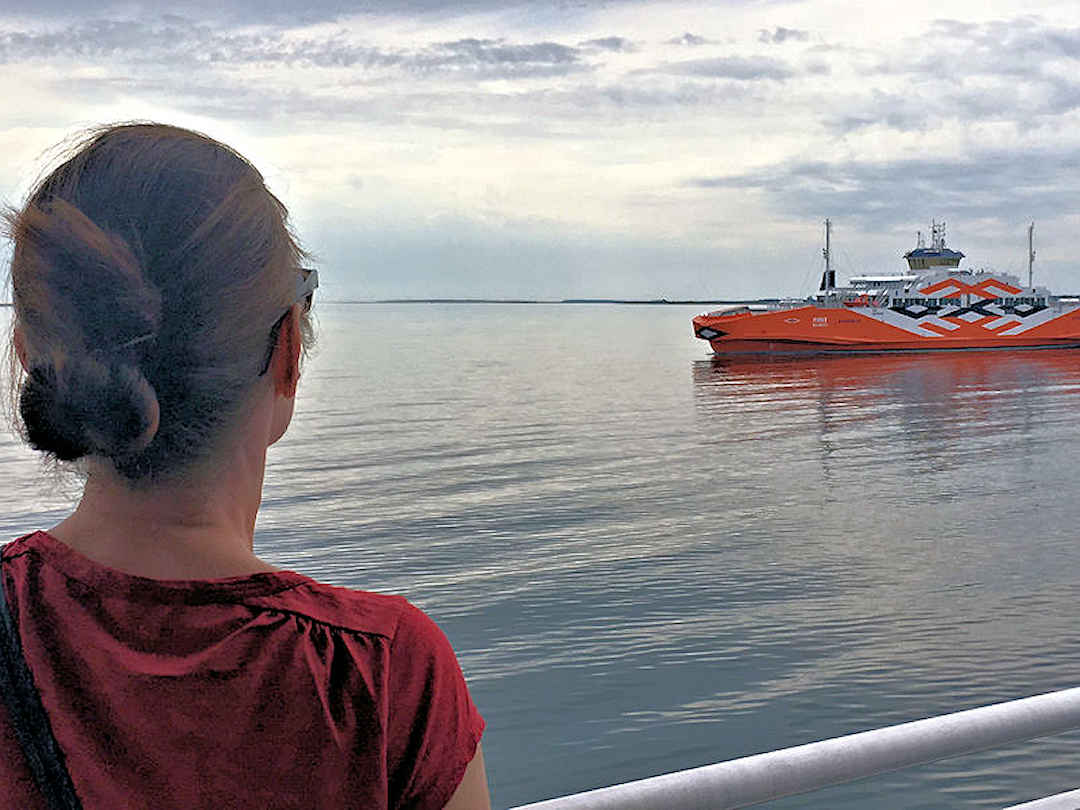
Taking the bus between Tallinn and Kuressaare includes a ferry crossing between mainland Europe and the island of Muhu
How to save money on transportation
Being flexible is what really pays when it comes to transportation and air travel in particular. Travel outside of peak season if you can. If you can't, fares might still be cheaper during certain times of the week and even hours of the day, so check websites like Skyscanner and Google Flights that allow you to see a whole month and all the options on any given date.
If there are several airports in the vicinity of your home (or in the vicinity of your destination) compare the prices between the different options. For example, flying to Mykonos and taking the ferry to Santorini might end up being way cheaper than flying from your home airport straight to Santorini.
We use and recommend the following online travel agents and service providers for our transportation needs:
Airfares
To find good flight deals, we use one-stop travel sites or travel aggregators. Each shows the cheapest airfares on any given day, so you can choose to fly a day/week/month earlier or later, pending your flexibility.
If you find a good deal, book it there and then as prices change constantly. Ideally do your research with your browser in incognito mode, as cookies will show booking sites how keen you are to do a certain trip, which may affect the price quoted – that goes for all online travel bookings (not just flights). The best fares generally go first, so planning ahead is important when it comes to (air) transportation. The same is true if you want to use air points/miles, as there is only a very limited number of seats available for any given flight. We tend to not actually go through the flight aggregators, but book with the airline/s directly. The price is usually the same but we have a direct contract with the airline (rather than with the middleman) in case something goes wrong.
If you plan to travel across multiple continents, you may want to compare passes that offer several destinations as a package (such as around-the-world fares offered by One World or Star Alliance members) vs booking each leg of your trip individually. If you are travelling during peak season those multi-destination packages may be a better deal than booking each leg individually. You can do overland sections on around-the-world tickets too, which means you could supplement your around-the-world ticket with cheap flights, bus and train rides in between destinations.
Vehicle rental (including relocations)
Unless your trip takes you across oceans, another way to save on transport is to look for vehicle/motorhome relocations. There are websites in many countries offering massively discounted one-way rates (often including fuel and/or insurance) to those driving a vehicle/motorhome from A to B within a certain period. These deals are fairly last minute, and A and B are usually bigger transport hubs, but if that’s an option just search for vehicle/motorhome relocation at your destination.
Speaking of vehicles: If you are planning to hire a vehicle at your destination, it also pays to shop around. We use and recommend Discover Cars, an aggregator website that allows you to search across major car rental companies at once. And you don’t have to pay for the hire until you pick up the car.
Hitchhiking
A final option to save on transport costs is… to hitch a ride. While Paul and I did it safely in Dominica on a public holiday (when there was no other option), and we have taken plenty of people along in our campervan in New Zealand, there are many countries we wouldn’t feel safe hitchhiking. Judge for yourself where and when you can and can’t do it.
Groceries and Dining
By the time we arrived in Estonia, we thought we’d tried all the different Baltic cuisines available. We were wrong and pleased to once again extend our culinary experiences.
As usual, we ate a hot lunch while out and about and a cold dinner of local cheeses, meats and bread in the evening. On average, our daily lunch cost us EUR9.54 per person.
In Tartu, our favourite cafe was Kohvik Crepp, a French cafe serving large portions at very reasonable prices. Choose any galette (savoury pancake served with a small salad) and you won’t be disappointed. Two meals and two drinks cost us EUR18.00.
Despite being in the touristy area of Tallinn, Von Krahli AED was a great choice on our first day in the capital. Our meals were delicious and worth every cent of our total cost of EUR37.40 (including two drinks).
How to save money on dining and groceries?
Dining out all the time can quickly get expensive. We always try and book accommodation where we have access to a kitchen - either our own little kitchenette or the kitchen of our host. That way, we can store food in the fridge and make our own meals. We usually have breakfast and one other meal at our accommodation, and one meal when we're out and about.
Restaurants (even in tourist hotspots) often have special lunch offers (for example, a three-course meal for EUR10). Portion sizes in many parts of the world are usually quite substantial, so we often share a three-course meal. The same applies if you go out for dinner: Order a starter or salad and a main, and that's usually enough for two people. An added benefit: there is less food waste.
As for groceries: every country has more expensive and cheaper supermarkets. Ask your host what the cheaper options are (for example, Aldi or Lidl in many European countries) and avoid convenience stores as much as possible.
Experiencing the local cuisine is one of the reasons why WE travel… Paul and I tend to only eat out once a day (sometimes only once a week), usually at lunchtime. This allows us to try local dishes while taking advantage of awesome lunch deals. It also means we don’t have to roam around unknown parts of town every night in search of a restaurant.
Experiences
Tartu
Tartu is easily walkable. So, one Spring morning, we decided to do our own self-guided walking tour, using the guide map called Strolls in Tartu. Because it was self-guided, we were able to do it at our own pace, stopping longer at some sites and skipping sections we were less interested in. We walked around Tartu Old Town and up to Toome Hill Park as well as through the University of Tartu Botanical Gardens. Absolutely FREE.
I have an affinity for sports history and knowing that the Estonian Sports and Olympic Museum was in Tartu, it deserved a visit. Did I know any famous Estonian sportspeople before I visited the museum? No. Did I know what the national sport of Estonia was? No. But that’s why you go to museums. To learn, to take it all in, and hopefully, you walk away more knowledgeable. For EUR6 and two hours of my time, I learned a lot about the history of Estonian sports – from the very first sportsmen, through the twentieth century until the Soviet occupation and today.
Oh, and depending on who you talk to, the national sport is basketball or ice hockey. Or is it kiiking?
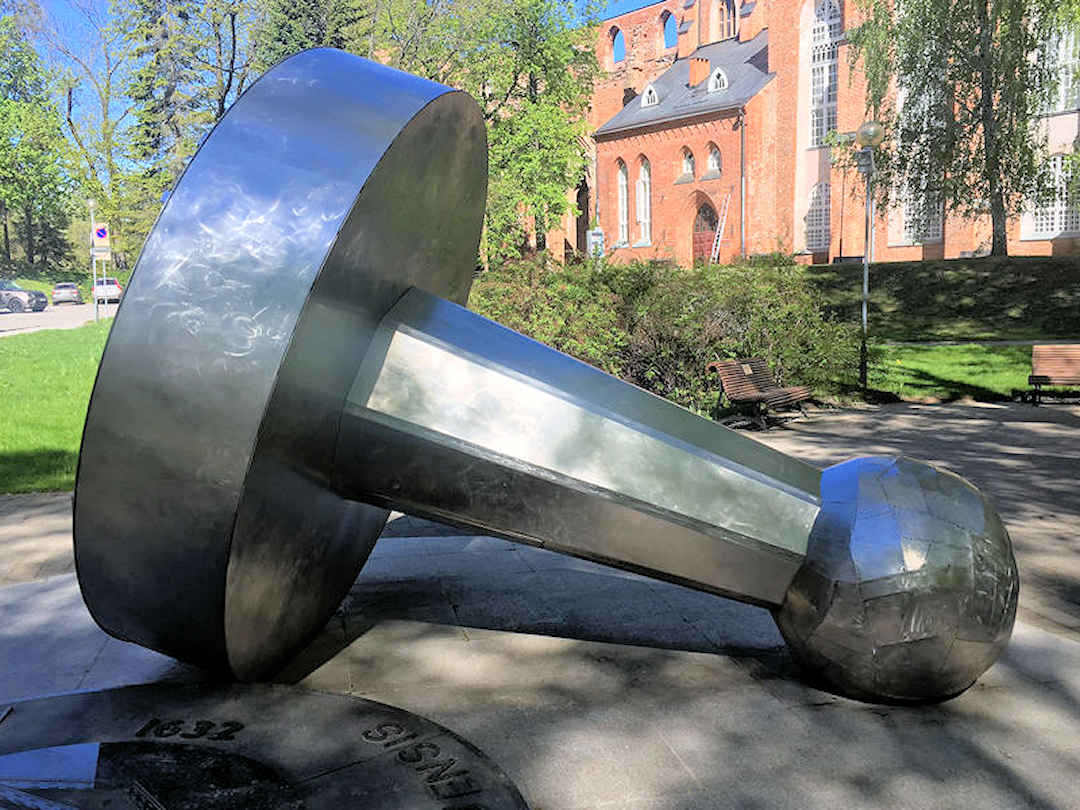
Tallinn
We did, and certainly recommend, the Free Walking Tours (wherever they exist). Heli – our guide in Tallinn was enthusiastic, extremely knowledgeable and able to deliver the tales of the old city with humour and a little bit of gusto. She was not scared to embellish some history to get a point across but then reminded us of the reason Estonians are such proud but diverse people.
We normally miss out on free events as we travel from city to city, but this time, we were fortunate. The biggest museum event of the year was happening while we were in Tallinn! Once a year, museums and heritage sites in Estonia open their doors longer than usual (until 2300h) and free of charge. So how many museum visits could we fit into one evening? – Here’s your chance to find out.
We started with a 30-minute concert at the Cathedral of St Mary the Virgin before I climbed the church tower for a spectacular view of the city. Next, we headed to the Museum of the Popular Front (No longer open) to get an in-depth understanding of Estonia’s struggle for independence in the early 1990s. Our final stop was for the rooftop views from the National Library of Estonia. All this for free.
On another day, we went to the Estonian Maritime Museum, located in a building originally constructed as a hangar for seaplanes over 100 years ago. The maritime museum has only been open for seven years and caters for young and old. The main attraction inside the museum is the 1936 submarine Lembit. Unlike a lot of retired submarines I have visited, this one retains a lot of the mechanical and functioning components. The ticket was a bit too expensive for what it was, at EUR15 per adult.
Saaremaa
While there are buses on Saaremaa Island, they are infrequent. So, to see the historic, cultural and natural highlights of the island, you do need a vehicle. We hired a car for 24 hours for that purpose and visited:
- the Kaali Meteorite Craters – a group of nine craters that were created by a meteorite shower
- Panga Cliff – one of the few sea cliffs on an otherwise flat island; and
- Angla Windmill Park (entry fee of EUR4 per adult).
Since we stayed in the town of Kuressaare, we were able to walk to the Kuressaare Castle – an eclectic museum representing different periods of Estonian history. Well worth the visit, but make sure you ask for a map to help guide you through the collection in chronological order. The entry fee was EUR8 per adult.
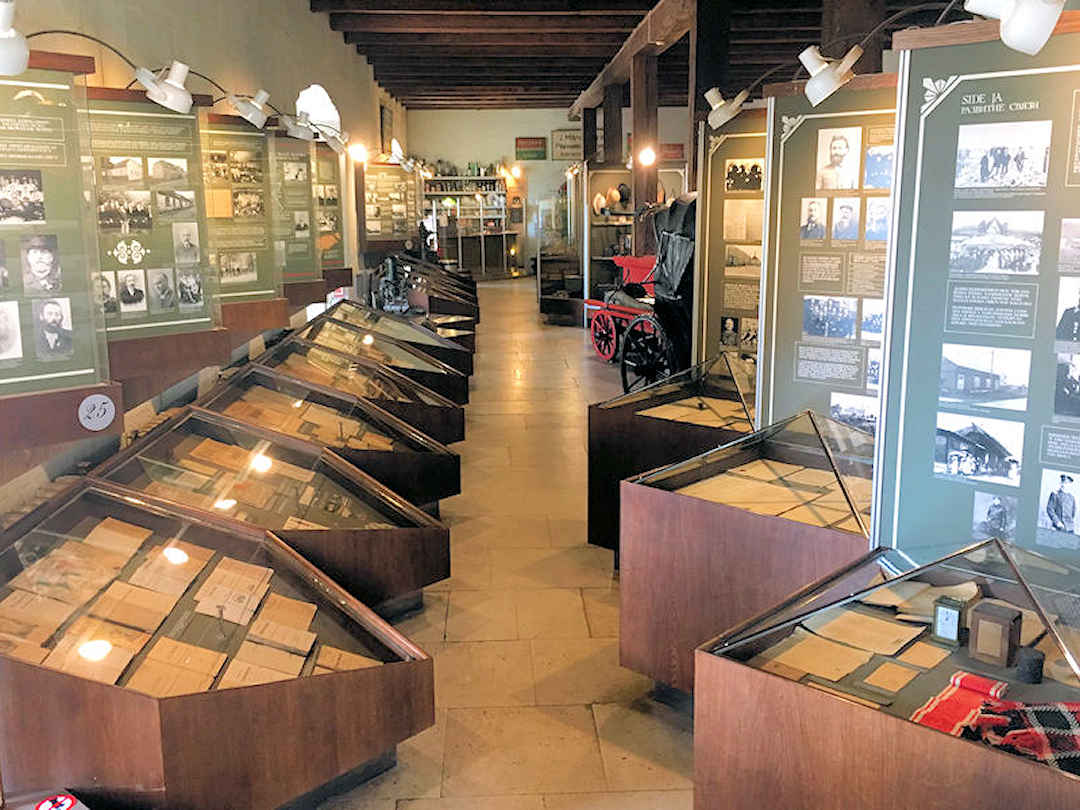
Kuressaare Castle is full of exhibits and information. The museum was very interesting, but with some reorganisation, it could be even better.
How to save money on experiences
Free activities or experiences
Many activities (and some of our most treasured experiences) are free or cost very little. On our journeys, we have
- Visited many museums free of charge (including the Colosseum and Forum in Rome which are free on the first Sunday of the month)
- Joined Al Green’s Baptist Church Service in Memphis (rather than pay the exorbitant entry fees at nearby Graceland)
- Attended free guided walking tours around the world (you pay a tip at the end based on your budget and how much you liked the tour)
- Did countless self-guided walks and used public transport to get to know a city
- Hiked in the Andes in Ecuador and climbed volcanoes in the Caribbean
- Swam and snorkelled at countless beaches, using tree shade rather than paying for parasols; and
- Attended free performances and danced with locals in Cuba.
Just search for free activities in your destination and chances are someone has made a nice list for you already.
Paid Experiences
Paying for experiences or activities can add up quickly, especially if you're travelling as a family. Make use of family passes (if available). Look out for special deals and discount coupons. If you travel in a group, it may also pay to book a private tour and share the cost. Shop around - here are some of the service providers we have used and can recommend:
How much does it cost to explore the Baltics?
Visiting the Baltic countries cost us on average EUR45.17/USD50.54 per person per day. Check out our individual country costs here:
Travel Costs Summary Table
| Categories | EUR per person per day | Percentage per total |
|---|---|---|
| Communications | 0.32 | 1% |
| Groceries | 6.09 | 13% |
| Dining | 9.21 | 19% |
| Experiences | 7.46 | 16% |
| Accommodation | 14.93 | 31% |
| Miscellaneous | 0.56 | 1% |
| Health | 2.92 | 6% |
| Transport | 5.80 | 12% |
| Total per person per day | 47.30 |
Withdrawing cash overseas can be expensive but it doesn’t have to be. We can show you how to avoid unnecessary fees and make your travel budget stretch further.
How do you determine which card is best for your overseas trip? Using the right one can save bank fees and make your travel budget stretch further.
Ever been caught out by the bad FX rates and exorbitant commissions charged by FX bureaus? These tips allow you to minimise these charges in future. We also recommend XE Money Transfer to keep more of your money when you complete a transfer.
Cash Needs
From a safety point of view, we like to have as little cash as possible on us, yet enough to not feel uncomfortable. Of the expenses incurred in Estonia, we paid 30% in cash. The biggest cash amount was EUR64 for our accommodation in Tartu.
How much did it cost you to explore Estonia?
I wrote this Estonia travel costs guide based on our own peronal experience. If you have explored Estonia as well and you have something to add about your travel costs, please feel free to contact me. If you liked my travel cost saving tips and found them helpful, I would appreciate it if you could share them with your friends and family via the Share buttons below. Even better, link to the page from your personal blog or social media platforms.

